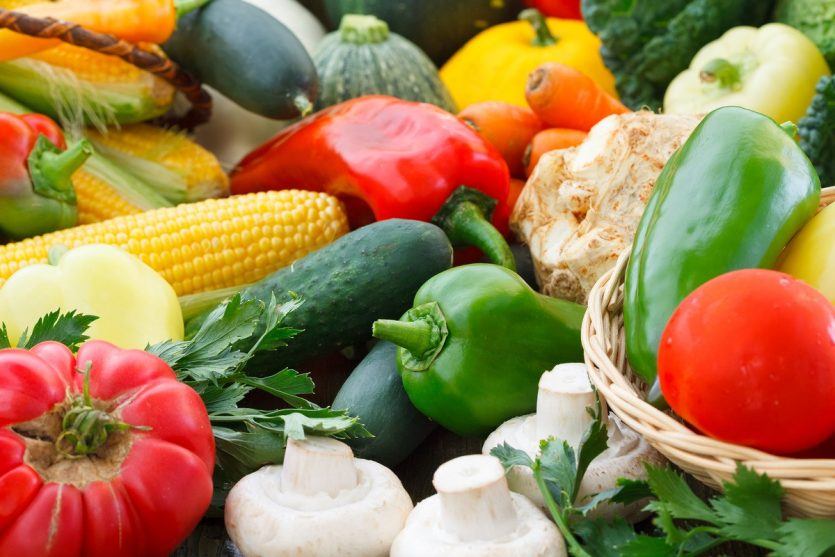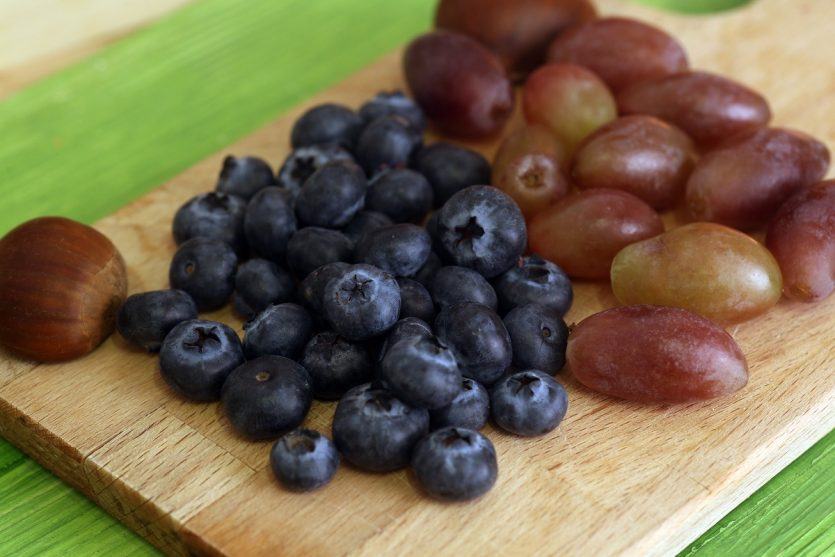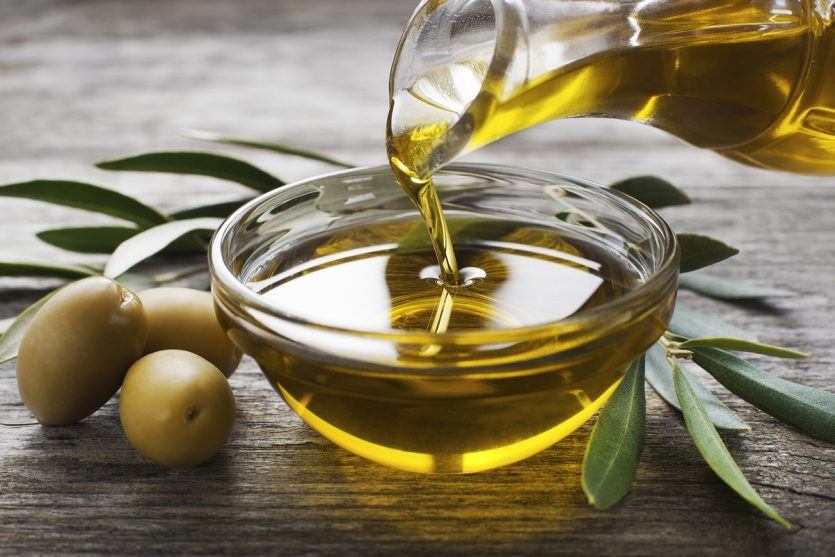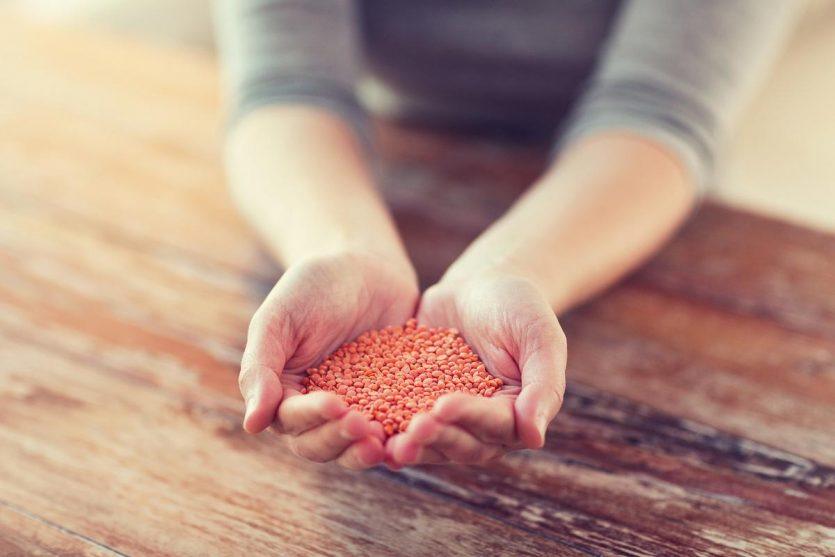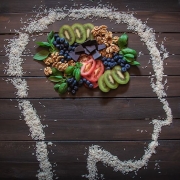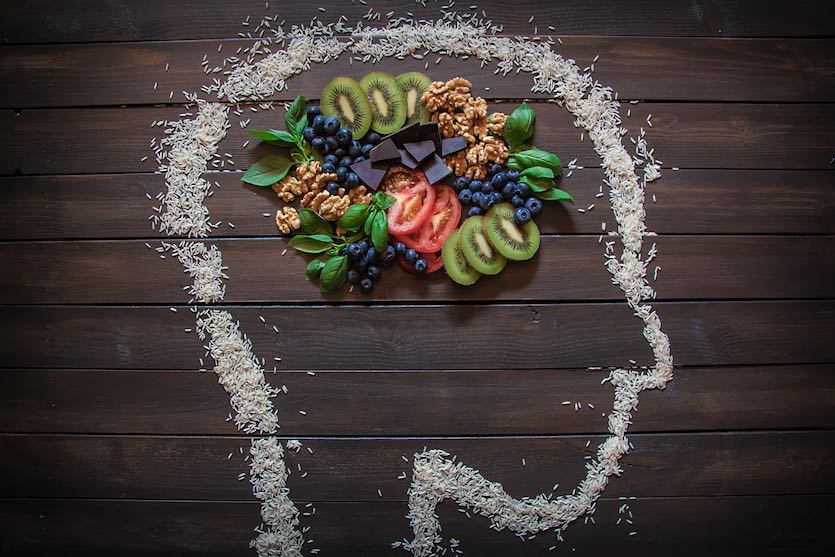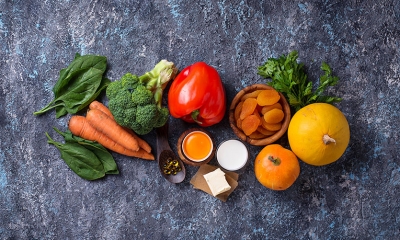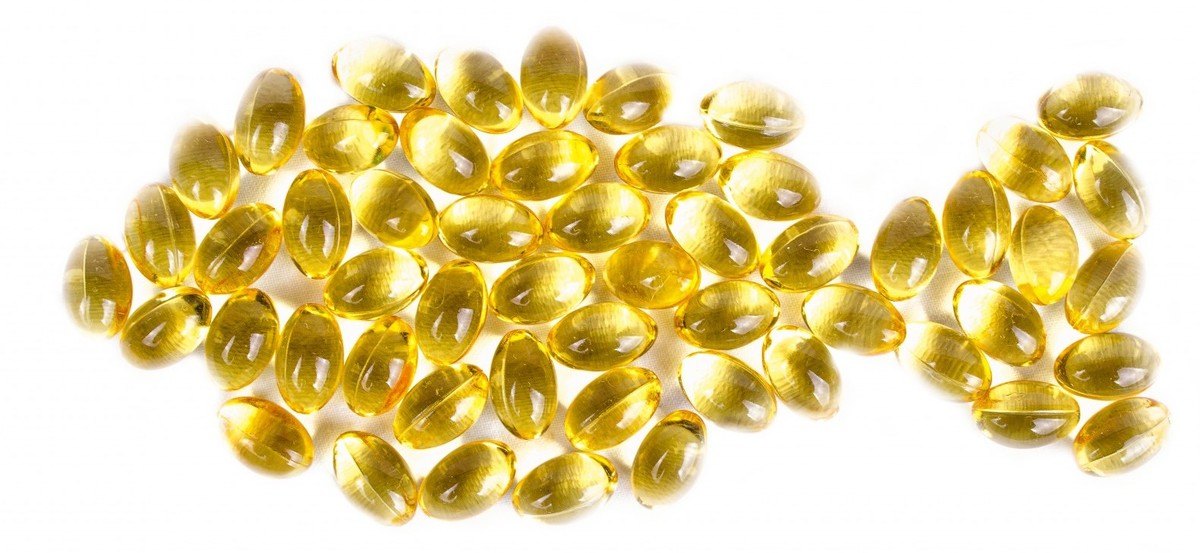Tag Archive for: essential nutrients
Introduction to Plant Compounds
Plants are a large portion of a healthy diet. Fruits, vegetables, and whole grains provide your body with essential nutrition and nourishment. Loaded with vitamins and minerals, these food groups play an active role in keeping you healthy. But your favorite produce has more to offer than meets the eye. Plants are packed with powerful compounds called phytonutrients.
These plant chemical compounds can promote and maintain good health. But your body can’t make these important nutrients. So it needs a reliable source of these plant compounds. Eating a variety of plant-based foods can help supplement your diet with the phytonutrients your body needs.
A well-rounded diet can provide you with dozens of phytonutrients. And each performs a specialized role in the plants they’re derived from—and in your body. Antioxidant ability is one of the most important functions of phytonutrients. These plant compounds also help protect your eyes, maintain a healthy immune system, and help facilitate cell signaling. Phytonutrients are interesting, important, and valuable to your health.
Important Terminology
Understanding how phytonutrients work in the body requires a grasp of some new vocabulary. Learning the following terms will help you understand the importance and value of phytonutrients to your health.
- Phytonutrient: A chemical compound found in plants that has positive impacts on human health and nutrition. Phytonutrients can also be referred to as phytochemicals.
- Free Radicals: Any molecule containing an unpaired electron. Free radicals are very reactive and can trigger oxidation.
- Oxidant: These molecules contain oxygen and are highly reactive. They easily react with other molecules changing their chemical nature. These changes can ultimately become toxic to the cell.
- Antioxidant: A molecule that slows or reduces the damage done to an organism by free radicals and other oxidants. Antioxidants help prevent a chemical reaction called oxidation from occurring. They do this by neutralizing unpaired electrons on potentially dangerous molecules.
- Carotenoids: A class of naturally occurring plant pigments. Carotenoids produce red, orange, and yellow color in fruits and vegetables. These phytonutrients protect plants from oxidative damage.
- Polyphenols: These phytonutrients are concentrated in the leaf tissue of plants. They deter predators and help keep plants healthy. Polyphenols are the largest class of antioxidants in your diet.
- Bioflavonoids: Bioflavonoids are a subcategory of polyphenols. They share the same function in plants, but differ in chemical structure. Bioflavonoids contain unique chemical signatures, like ketones and alcohol groups (carbon-oxygen double bond and oxygen-hydrogen single bond, respectively).
Phytonutrient Function in Your Body
In plants, phytonutrients act as pigments, giving fruits and vegetables their vibrant color. They also protect, fortify, and strengthen healthy plants. But these compounds can also play a role in helping maintain your health.
Phytonutrients act as antioxidants, helping protect your body from free radicals. Your body needs to maintain a balance of oxidants (free radicals, etc.) and unreactive molecules. When this balance shifts in favor of oxidants, damage can be done to your healthy cells.
These plant compounds help neutralize oxidants and help maintain that healthy balance. They do this neutralizing unpaired electrons on potentially dangerous molecules. This chemical interaction stabilizes the oxidant and keeps oxidative damage from taking place.
Classes of Phytonutrients
Below, you’ll find information about some of the major classes of phytonutrients and examples of each. Although they may differ in structure, each phytonutrient works for the same goal: reducing oxidative damage and protecting your health.
Carotenoids
Photosynthetic bacteria, algae, and plants produce more than 750 pigments called carotenoids. Carotenoids help protect the plant from harmful wavelengths of light so plants can use the sun for energy. These pigments also protect the photosynthetic portions of plant cells.
This class of phytonutrient is the source of the bright red, orange, and yellow colors of fruits and vegetables. Carotenoids are powerful antioxidants and are critical in protecting your eye health and helping facilitate smooth cellular communication.
Beta-Carotene
Beta-carotene is probably the most well-known carotenoid and phytonutrient. It is a precursor to vitamin A. Since your body can’t make vitamin A, you need a provitamin like beta-carotene in your diet. So your body can turn it into vitamin A when it needs.
Beta-carotene is converted to vitamin A in the body and supports healthy eyes. This conversion is accomplished in the duodenum (the first part of your small intestine) when intestinal enzymes split beta-carotene into two active vitamin A molecules called retinal. That’s the usable form of vitamin A in the body. And it’s involved in many complex processes in your body.
Lycopene, Lutein, and Zeaxanthin
These three carotenoids also help maintain eye health. But they work differently than beta-carotene.
Light entering your eye is focused on the retina and filtered by cells in your eye called rods and cones. The chemical structures of lycopene, lutein, and zeaxanthin allow them to absorb light, too. These pigments specifically absorb blue light, which has been shown to cause light-induced oxidative damage.
But that’s not all these phytonutrients do. Carotenoids like those listed above help your body’s cell signaling be more efficient and reliable. How do they do it? Carotenoids stimulate the manufacture of proteins called connexins. These proteins help neighboring cells exchange information, faster.
Polyphenols
Polyphenols have a distinctive shape and a name that describes their chemical makeup. To understand them a bit more, let’s dive deep into the chemistry.
Chemical compounds come in all shapes and a variety of unique organizations. The order and placement of atoms in each molecule determine its function. Polyphenols are made primarily of two kinds of atom patterns: benzene rings and alcohol groups.
Benzene rings are cyclical chemical rings made of carbon and hydrogen with alternating double bonds. Alcohol groups consist of oxygen and hydrogen attached to another atom, like carbon. Together, one benzene ring plus one alcohol group equals one phenol. When multiple phenols are strung together, polyphenols are born. This chemical shape is important because it literally lets polyphenols absorb and neutralize extra electrons.
Polyphenols are the most numerous antioxidants in your diet. They are known to promote cardiovascular health. Two polyphenols, resveratrol and curcumin, are especially important in a healthy diet and are key ingredients in dietary supplements.
Resveratrol
Resveratrol is an antioxidant polyphenol found commonly in your diet. You can find it in peanuts, berries, grapes, and red wine.
The positive effects of resveratrol have only recently been uncovered. In the 1990s, scientist stumbled upon resveratrol while studying the health benefits associated with red-wine consumption.
For many years the diets of French people had been under scrutiny. The French regularly eat foods high in saturated fats, yet they have healthy hearts and blood vessels. They also consume large amounts of wine. This phenomenon is referred to as the “French paradox.” After resveratrol was discovered in red wine, researchers took a closer look to see if it could help explain these paradoxical observations.
By itself, resveratrol is great at tackling free radicals and other reactive oxygen species. But it also supports the function of other important molecules. Glutathione, one of the most ubiquitous molecules in your body, pairs up with resveratrol to help protect your cells from oxidative damage, which helps maintain healthy cell function.
Grape Seed Extract
Since grapes contain both resveratrol (found primarily in grape skins) and grape seed extract, the function of these two phytonutrients are very similar. Grape seed extract comes from, you guessed it, grape seeds. It is a powerful antioxidant and supports cardiovascular health.
Circulatory system benefits come from the phytonutrient’s ability to help the body maintain healthy blood pressure already in the normal range. This is done by supporting the healthy function of venous pumps, which help blood return to the heart.
Curcumin
If you enjoy tropical cuisine, get excited. Because some of your favorite foods are loaded with phytonutrients. Curcumin is a polyphenolic compound making waves in human nutrition. This phytonutrient has demonstrated the ability to support healthy brain and joint function.
Curcumin is found in turmeric, a spice derived from the roots of the tropical plant Curcuma longa Linn. Turmeric adds bright yellow-orange color to cooking. This vibrant polyphenol has been used for medicinal purposes in India for centuries. And new scientific research is adding credence to its ancient claims.
A lot of the benefits come from curcumin’s ability to behave like an antioxidant. But it also disrupts the route of cytokines and enzymes like cyclooxygenase. That’s how curcumin helps maintain healthy joint function.
The brain-health support provided by curcumin is achieved in a different way. As a result of aging, memory can be effected by the build-up of “junk” or “plaques” in the brain. Plaques are clumps of protein that stick to brain tissue and interrupt cell signaling. Curcumin has been shown to help dismantle those plaques and makes it harder for them to form. This phytonutrient has also been show to support brain-cell growth and maintain healthy cognitive function and memory.
Green Tea Extract
Green tea is enjoyed by millions of people every day. But there is more to the drink than a natural energy boost. Green tea extract may help maintain a healthy weight.
Green tea extract is natural source of caffeine and it’s full of polyphenols. This phytonutrient has been shown to increase the energy your body uses every day. And using more energy makes reaching a healthy weight more manageable.
Here’s how it works. Green tea extract supports the action of norepinephrine, the neurotransmitter that regulates heat production and fat oxidation. The polyphenol also oxidizes fat cells and increases the rate at which your body uses energy. This increase in metabolism creates heat and burns fat—all without significant impact on your heart rate.
Olive Fruit Extract
Olive fruit extract and other olive-derived compounds work primarily as antioxidants. They protect the body from unhealthy oxidation. That’s how olive fruit extract reduces the toxic chemicals that lead to redness and irritation.
Glutathione function is also stimulated by olive fruit extract. Olive fruit extract and glutathione work together to destroy free-radicals and keep oxidative stress at bay.
This polyphenol also promotes healthy circulation which also helps supports heart function. That’s because healthy arteries help maintain normal blood pressure and promote general well-being.
Bioflavonoids
Bioflavonoids (also known as flavonoids) are a special category of polyphenols. They are further categorized by their chemical structure. And there are hundreds of plant-derived bioflavonoids that work to keep you healthy and strong.
Like other phytonutrients, bioflavonoids are primarily antioxidants. But they can also help protect the liver, maintain brain health, and more. In addition, bioflavonoids can be useful in maintaining normal hormone levels.
Quercetin and Rutin
Quercetin and rutin belong to a group of bioflavonoids called flavonols. This category of bioflavonoid is unique because of the position of alcohol groups in its chemical structure.
Flavonols—like quercetin and rutin—interrupt signals between hormones and promote normal hormone interaction. Quercetin and rutin also provide support to your liver. They work together to assist in a natural process that promotes toxin excretion in the urine.
Hesperidin
Hesperidin falls into the bioflavonoid category of flavanones. These compounds are distinguished by the oxygen-carbon double bond in their chemical arrangement.
Hesperidin and other flavanones act as antioxidants that protect the brain. These antioxidants function like curcumin—which is mentioned in the polyphenols section above. Hesperidin can help preserve brain function by fighting against plaque formation. These protein build-ups interfere with brain cell communication. By optimizing brain health and protecting against age-related memory loss, hesperidin and other flavanones help maintain healthy cognitive function.
Flavanones have also demonstrated abilities to support your immune system and help keep you healthy.
Other Antioxidants and Important Plant Compounds
Your body needs adequate amounts of phytonutrients to maintain its fitness. But there are other important molecules and chemical compounds necessary for health that can be found in a proper diet. For detoxification and healthy digestion, the following compounds are critical.
Cysteine
Cysteine is an amino acid necessary for building that all-important detox molecule, glutathione. Getting cysteine in your diet is easier than your think. It’s available in a lot of animal protein. But there’s several plant sources. So all you have to do is just add garlic.
Whole garlic cloves are brimming with a molecule called alliin. It contains the cysteine needed to help produce the glutathione your body needs. But alliin is trapped inside. Crushing, chopping, and chewing garlic releases alliinase.
The protein alliinase frees alliin making it available for our bodies to absorb. Once absorbed, our bodies release the cysteine from alliin making it available for use. One use is glutathione production. Cysteine increases the concentration of glutathione in the body and puts it to work detoxing foreign chemicals and cleaning up free-radical damage.
Alpha-Lipoic Acid
Glutathione relies on alpha-lipoic acid for help in the detoxification process. But your body also needs this antioxidant for helping to maintain normal blood sugar—provided it’s already in the normal range to begin with. Alpha-lipoic acid does this by increasing glucose’s sensitivity to insulin. This helps maintain your metabolic health.
Dietary Fiber
Fiber is crucial for healthy and comfortable digestion. Plants are full of fiber and carbohydrates geared towards making digestion easier.
Increasing fiber can help your body make better use of the sugars in your food. Fiber also softens stool and can help relieve occasional constipation—one of the more uncomfortable side effects of poor digestion.
Growing evidence suggests that high-fiber diets help in weight control. Fiber-rich foods can prolong the feeling of fullness after a meal. This full feeling keeps the need for mindless snacking in check and can lower the amount of unhealthy food consumed.
High-fiber foods also generally provide more nutrition than their low-fiber counterparts. By filling your belly with a fiber-rich meal, you can get better nutrition to your body and help maintain a healthy weight.
Powerful Produce – Sources of Essential Phytonutrients
Phytonutrients are already in your diet. Your just need to know where to look. Colorful fruits and vegetables are excellent sources of carotenoids. Dark green and leafy veggies are rich in bioflavonoids. Phytonutrients are also hiding in some of your favorite beverages—namely red wine and green tea.
This list of phytonutrient-dense foods can help you make sure your body gets these important plant compounds. This is by no means comprehensive, but it’s a good place to start:
- Red, orange, and yellow peppers
- Tomatoes
- Carrots
- Squash
- Berries
- Oranges
- Broccoli, cauliflower, kale
- Dark, leafy, green vegetables
- Nuts and nut oils
- Olive oil
- Red wine
- Chocolate
- Turmeric, ginger, and garlic
- Whole grains high in fiber
And even the best diets may fall short. So use your healthy diet as a foundation of phytonutrients and consider adding supplementation to get everything you need to live your best, healthiest life.
About the Author
Sydney Sprouse is a freelance science writer based out of Forest Grove, Oregon. She holds a bachelor of science in human biology from Utah State University, where she worked as an undergraduate researcher and writing fellow. Sydney is a lifelong student of science and makes it her goal to translate current scientific research as effectively as possible. She writes with particular interest in human biology, health, and nutrition.
References
https://www.fruitsandveggiesmorematters.org/what-are-phytochemicals
http://lpi.oregonstate.edu/mic/dietary-factors/phytochemicals
http://ajcn.nutrition.org/content/81/1/215S.full
https://www.ncbi.nlm.nih.gov/pmc/articles/PMC3942711/
https://www.ncbi.nlm.nih.gov/pmc/articles/PMC3850026/
https://www.ncbi.nlm.nih.gov/pubmed/26633317
https://www.ncbi.nlm.nih.gov/pmc/articles/PMC3249911/
https://en.wikipedia.org/wiki/Polyphenol
http://www.health-mall.in/files_hl/BIOFLAVONOIDS_THERAPEUTIC_POTENTIAL.pdf
https://nccih.nih.gov/health/grapeseed/ataglance.htm
Your brain is powerful. You can even use it to think about how the brain itself works. But this power doesn’t make your brain immune to factors that impact the rest of your body. Lifestyle and environment can affect your brain health. Luckily, there are nutrients for brain health shown to support cognitive function.
You’ll read about a handful of the most important nutrients for your brain. And you’ll find brain foods that contain these key nutritional components of maintaining cognitive health.
Healthy Lipids
For a long time, dietary fats (lipids) have been connected to brain health. Originally, lipids’ effect on the cardiovascular system was thought to facilitate that connection. But more recent research shows beneficial dietary fats have more direct actions on the brain.
Omega-3 polyunsaturated fatty acids (like DHA from fish oil) normally make up cell membranes throughout your body. And like other saturated fats, they’re fundamental building blocks for your brain cells. That’s part of the reason fish is often called a brain food.
But fatty, cold-water fish aren’t the only food you should turn to for healthy lipids for supporting brain health. Add these options to your brain health shopping list:
- Avocados
- Nuts (almonds to walnuts and everything in between)
- Seeds
- Plant-based oils
- Soybean
Flavonoids
The antioxidant effects of flavonoids are well-established in a test-tube setting. But these plant compounds—like cocoa, ginkgo, and grape-seed extracts—have more complex actions in the body that is are continually being researched.
Some flavonoids show promising results in maintaining healthy brain function. Quercetin—a flavonoid that’s a major component of ginkgo biloba extracts—has been shown to maintain memory and learning abilities in some studies. Further research on the subject is needed.
Flavonoids come from a variety of colorful plant foods. That provides ample options for packing your diet with flavonoids. Try these:
- Berries
- Dark chocolate
- Dark green, leafy vegetables
- Grapes
- Tea
- Plums
- Broccoli
Carotenoids
Like their phytonutrient cousins, carotenoids are pigments, providing color to fruits and vegetables. The yellows, reds, and oranges bringing warm color to your diet come from carotenoids.
Some powerful members of this phytonutrient family—lutein and zeaxanthin—are more known for supporting eye health than the brain. But research has shown ties between these carotenoids and maintaining normal, healthy cognitive function.
Other carotenoids are sought out by the brain. They are used as antioxidants to help protect your brain from oxidative stress.
To help in your brain’s quest for more carotenoids, turn to:
- Carrots
- Pumpkin
- Spinach
- Sweet potatoes
- Red bell peppers
- Tomatoes (canned and raw)
- Kale
B Vitamins
Adequate levels of the B vitamin folate are essential for brain function. The proof? Folate deficiency can lead to neurological and cognitive issues.
Clinical trial results have deepened the connection between folate and cognitive function. These studies have shown folate supplementation—by itself or in conjunction with other B vitamins (B6 and B12)—to be effective at maintaining healthy cognitive function during aging.
Finding folate and other B vitamins is fairly easy. Seek out these foods:
- Legumes
- Spinach
- Broccoli
- Asparagus
- Enriched grains
- Beef, seafood, and eggs (for vitamin B12)
- Bananas, potatoes, and nuts (for vitamin B6)
Vitamin E, or α-tocopherol
Looking up brain foods will often lead you to nuts and fish. Part of that, as you read above, is thanks to healthy fats. But many nuts also pack an important vitamin payload. They are often packed full of vitamin E.
This powerful antioxidant also has studied links to cognitive performance. One example that sticks out is an association between dipping serum levels of vitamin E and poor memory performance in older individuals.
So, remember to add these good sources of vitamin E to your menu:
- Nuts
- Plant oils
- Green vegetables
- Blackberries
- Broccoli
- Sunflower seeds
Calcium and Magnesium
Your brain works so well because of the interconnectedness of your neurons and their ability to communicate. Two minerals—calcium and magnesium—play a big role keeping communications flowing.
You know them better for bone health benefits. But these minerals help your brain, too. Calcium aids proper functioning of nerve cells and helps control the flow of neurotransmitters. Magnesium plays a role in impulse transmission. And it also helps your brain unlock all the benefits of B vitamins by catalyzing their transition to active forms.
Luckily, these mighty minerals are widely available in your diet. Calcium can be found in dairy products, beans, oranges, cabbage and kale. Magnesium is available in nuts, whole grains, milk, meats, and green, leafy vegetables.
Other Nutrients for Brain Health
Here’s a short list of the other nutrients with researched roles in brain health:
- Alpha lipoic acid has been shown to maintain memory and cognitive function.
- Caffeine is more than a pick-me-up for your brain. There have been ties between caffeine consumption and the brain’s processing abilities.
- Zinc is an essential mineral that is found in the front part of your brain. More study is needed to determine mechanisms, but a lack of zinc has connections to numerous neurological issues.
- Curcumin is a strong antioxidant that seems to protect the brain from lipid peroxidation and nitric-oxide-based radicals.
- Several gut hormones or peptides—like leptin, ghrelin, glucagon-like peptide 1 (GLP1) and insulin—have been found to support healthy emotional response and cognitive processes.
Energy Production
The brain runs your body. And it takes a lot of energy to maintain proper operation. Healthy macronutrients are necessary to fuel your brain and provide the energy it needs.
The mechanisms involved in the transfer of energy from foods to neurons are likely to be fundamental to the control of brain function. Processes that are associated with the management of energy in neurons can affect brain plasticity.
Far-Reaching Impacts of Good Brain Nutrition
Lifestyle and diet have long-term effects on your health. That means they are likely underestimated for their importance to public health—especially when it comes to healthy aging.
But those factors are important to your brain.
The gradual and sometimes imperceptible cognitive decline that characterizes normal aging can be influenced by the nutrients you feed your brain through a healthy diet. So, properly fueling your brain to tackle your daily tasks should go hand-in-hand with long-term maintenance efforts. With so many delicious options, the burden of eating brain food shouldn’t be too hard to bear.
References
http://www.ncbi.nlm.nih.gov/pmc/articles/PMC2805706/
https://www.medicalnewstoday.com/articles/324044
https://www.health.harvard.edu/mind-and-mood/foods-linked-to-better-brainpower
https://www.newsweek.com/feed-brain-top-vitamins-minerals-cognition-495099
https://lpi.oregonstate.edu/mic/dietary-factors/phytochemicals/flavonoids
https://lpi.oregonstate.edu/mic/dietary-factors/phytochemicals/carotenoids
You’ve heard it before: you can get all the nutrients you need from the food you eat. Well, maybe you can. It’s certainly possible. But it’s unlikely.
We all know that vitamin supplements are no substitute for a healthy diet. But nobody is a perfectly healthy eater. It’s hard to get everything you need if you’re ill, a picky eater, dieting, or have food allergies. For those on restricted diets it can be particularly challenging.
Research has shown that deficiencies also vary by age, gender, or ethnicity. And deficiency may soar to nearly one third of certain population groups. In addition, many people are too busy to take the time to eat well or cook at home.
Luckily, there’s something you can do to help prevent deficiency. New research shows daily multivitamin/mineral supplements may be a nutritional insurance plan.
A new study in the journal Nutrients analyzes data from 10,698 adults age 19 years and older. The data comes from the 2009-2012 National Health and Nutrition Surveys (NHANES). This provided reliable 24-hour dietary interviews—including the use of dietary supplements. An in-person health examination also collected blood samples to analyze markers of nutritional status.
They found the daily use of multivitamin/mineral supplements helped prevent shortfalls in important nutrients necessary to support overall health. There were a few exceptions: calcium, magnesium, and vitamin D. But those are still important nutrients everyone needs to get enough of.
“Regrettably, there appears to be a great tenacity to old ways of thinking, e.g., you can get all the nutrition you need if you just eat a healthy, balanced diet—and then ignoring how most people actually eat and what they actually require,” lead author Jeffrey Blumberg, PhD said. “… Also, as our understanding about higher nutrient requirements of optimal health and wellness grows, particularly among older adults, it is clear that it can be quite difficult to achieve these intakes of selected nutrients from commonly available food choices.”
Now when someone says, “you can get everything you need from your diet,” you can point them to this study.
Previous research has shown positive effects of essential fatty acids (omega-3/6) in children with attention and reading difficulties. New research shows that these fats could improve reading ability in mainstream schoolchildren.
Foods high in omega-3 include fish, vegetable oils, nuts, flax seeds, and leafy vegetables. Most omega-6 fatty acids in the diet are obtained from vegetable oils. The modern diet is particularly low in omega-3 fatty acids which are important for signal transmission between nerve cells and the regulation of signaling systems in the brain.
The study group included 154 schoolchildren from western Sweden who were in grade 3 (between 9 and 10 years of age). The researchers then measured their reading skills using a computer-based test, called the Logos test. It measured reading speed, ability to read nonsense words, and vocabulary.
The children were randomly assigned supplements with omega-3/omega-6 or a placebo of palm oil which they took for 3 months (3 capsules per day). The study was double-blinded so neither the researchers nor parents knew which treatment the children were taking. After 3 months all the children received the real omega-3/6 capsules for the remainder of the research study.
Researchers saw a significant improvement in reading skills after the first 3 months in children taking the omega-3/6 acid compared to the placebo. While no children diagnosed with ADD/ADHD were included in the study, those children with mild attention problems achieved greater improvements in certain tests, such as faster reading, after taking the real supplements.
Teenage years are a critical period for brain development. Adolescents experience major shifts in hormones, and their brains hit developmental milestones throughout puberty. These changes contribute to a teen’s working memory, mental flexibility, and self-control.
It’s important for teenagers to fortify their brain during this time of growth and development. Vitamin D is one of the key nutrients needed to help support and maintain a teenage brain.*
The Brain and Vitamin D
For children, teens, and adults alike, vitamin D helps protect brain cells and supports the development of new neural pathways. Vitamin D can even act like a hormone to help optimize cognition and executive (brain) function.*
For many teenagers, vitamin D is acquired in the diet and through sun exposure. But for adolescents living in high-latitude regions, like Norway or Alaska (where the sun doesn’t always shine), this daily nutrient requirement is often not met. And teens tend to make poor food choices that keep them from getting their vitamin D.
A European study conducted in 2016 tested several hypotheses on the relationship between adolescent’s vitamin D levels and executive function. The link between vitamin D levels and mental health (such as sense of well-being, happiness, and satisfaction) was also researched.*
The results supported researchers’ predictions—vitamin D supports executive function and mental health in teenagers. Teens optimized their performance on problem-solving and executive function tests when they supplemented with vitamin D. Their mental health was supported with higher levels of vitamin D, too.*
Conversely, the teens in the study who did not supplement with vitamin D (or who were vitamin D deficient) didn’t experience the same brain-supporting benefits.*
That’s why it’s so important that teens meet their vitamin D needs. The teenage years are booming with brain development. Maintaining healthy vitamin D levels is just one way teens can be proactive and support their executive function and mental health.*
Get to Know the Study
This study shows that adequate levels of vitamin D can be an effective way for teenagers to support their growing brains. Supplementing this essential vitamin may be the most practical way to optimize the daily intake of vitamin D for teens—particularly those living at high latitudes. And although this study was conducted in Norway, the results can be extrapolated and applied to adolescents all over the world.
Here are the details of the study and research that links vitamin D and teenage executive function:
This experiment examined the relationship between vitamin D supplementation and performance on two executive function tests. To account for the effects on mental health, a survey was given to all participants.
The study subjects were 52 Norwegian teenagers who participated in the experiment after school. All subjects received a tablet to take daily during the study, but only half the tablets contained a vitamin D supplement.
A blood draw and three online pre-tests helped researchers establish a baseline for vitamin D levels and brain performance. The first two tests were called the Tower of London, and the Tower of Hanoi, respectively. These tests observed the teenager’s ability to plan and “look ahead” by predicting how many steps would be required to solve a problem.
The final pre-test was a self-report of the adolescent’s mental health. There is a well-established link between mental health and vitamin D. Researchers wanted to confirm this link in their study.
Performance on each of the two executive function test and self-report of mental health were recorded for each subject at the beginning of the study, and 4-5 months later. With half of the participants supplementing with vitamin D tablets on a daily basis, the researchers had three predictions to test:
- Vitamin D supplementation would be beneficial on both executive function tests*
- Vitamin D supplementation during winter would improve self-perceived mental health*
- Vitamin D supplementation would increase overall levels of vitamin D in adolescents*
The Case for Vitamin D
In the years since this study was published, more research has established a similar relationship between the brain and vitamin D. Teens aren’t the only age group that could benefit from vitamin D. Young children especially need to meet their daily vitamin D requirements to support the development of fine motor skills, and establish a foundation of mental well-being.*
See all the ways vitamin D helps optimizes your brain health. Check out these resources and read the research for yourself.*
Compared to placebo, patients taking Vitamin E had slower functional decline and needed less caregiver assistance.
A study published in the Journal of the American Medical Association reports on the benefit of high dose Vitamin E in patients with mild to moderate Alzheimer’s Disease. The double-blind, placebo-controlled, randomized clinical trial involved 613 patients with mild to moderate Alzheimer’s Disease. Participants were randomized to receive 2,000 international units (IU) of vitamin E, 20 milligrams of memantine, a combination of both, or a placebo daily. Average follow-up was 2.3 years.
Patients were analyzed on their capability to perform daily living activities, memory and language, cognitive function, behavioral and psychological issues, and the time needing caregiver assistance. The data was measured and collected at the beginning of the study and every six months during the trial.
Over the years of follow-up, scores declined by 3.15 units less in the Vitamin E group compared with the placebo group. In the memantine group, the scores declined 1.98 units less than the decline in the placebo group. Compared to the placebo group, those taking Vitamin E had an average delay in clinical progression of 19% per year, or approximately 6.2 months over the follow-up period.
Patients receiving the vitamin also needed less caregiver assistance in comparison with the placebo group. There was no significant difference in all-cause mortality or safety issues reported between the placebo and Vitamin E groups.
This study showed that high dose Vitamin E appears to slow functional decline and caregiver burden in patients with mild to moderate Alzheimer’s Disease.
Cigarette smokers are known to have an increased risk of heart disease and myocardial infarction (MI). Smoking negatively affects the cells lining the blood vessels (endothelial cells) and reduces the body’s output of plasminogen activator (t-PA), a substance involved in the normal breakdown of clots within the vessels. Previous research has linked fish oil to heart health benefits associated with improvements in blood lipid levels, blood pressure, heart rate, reductions in clotting, and overall vascular health.
In a study published in the journal Heart, researchers investigated the effects of omega-3 fatty acid supplementation on cardiovascular health and vascular function in otherwise healthy smokers. The randomized, double-blind, placebo controlled crossover trial included 20 cigarette smokers that were given either 2 grams of fish oil or placebo for a 6 week period.
The daily fish oil supplements were associated with an increase in t-PA at twice the level of the placebo group. Substances known to dilate blood vessels, thereby increasing blood flow, were also significantly higher in the omega-3 supplemented group compared to placebo.
This study is the first to show that omega-3 fatty acids may enhance endothelial t-PA release and improve endothelial vasomotor function in cigarette smokers. The researchers note that while the omega-3 supplements may have improved vascular function in smokers, they still aren’t likely to match the endothelial function of non-smokers, so quitting smoking is still a key factor in reducing heart disease risk.
For tips on how to quit smoking:
https://www.cdc.gov/tobacco/quit_smoking/index.htm
http://www.who.int/tobacco/quitting/en/
http://apps.who.int/iris/bitstream/10665/112833/1/9789241506939_eng.pdf?ua=1
For those with diabetes, folic acid supplementation may be beneficial in reducing the risk of stroke.
Folic acid is a derivative of folate (an essential B vitamin) and is an essential nutrient which has been linked to numerous health benefits. It is important enough that many governments require grains to be fortified with folate/folic acid to provide their citizens with regular, daily access to this important vitamin.
In countries with low access to folate, research has demonstrated an incredible reduction of incidences of neural tube defects (NTDs) in infants whose mothers had access to folic acid supplementation during pregnancy. Folic acid supplementation has proven to be a safe, inexpensive, and effective way to reduce the risk of NTDs and other birth defects in third-world countries and at-risk populations all around the world.
Folic acid supplementation has also been purported to improve heart health. The American Heart Association (AHA) published an article last year exploring the decrease in congenital heart defects associated with folic-acid supplementation and folic-acid-fortified foods. This connection between the B vitamin and heart health suggests that folic acid can work preventatively with regards to stroke and myocardial infarction, otherwise known as heart attack.
Diabetes, which is characterized by high blood glucose concentrations during and after periods of fasting, is a known risk factor for stroke. Researchers at several universities and hospitals in China hypothesized about the link between folic acid supplementation and the first stroke associated with elevated blood glucose levels. They performed a randomized double-blind study over the course of several years.
Participants in this study were men and women between the ages of 45 and 75 with hypertension, who were diagnosed as diabetic (type 2 diabetes mellitus) or normoglycemic prior to the study. The subjects were provided with either a daily oral dose of 10mg enalapril and 0.8mg folic acid, or 10 mg enalapril only. Follow-up visits for each participant were scheduled every three months for the duration of the study (median duration = 4.5 years).
Results indicate that, for any given glucose category (hypoglycemic, normoglycemic, diabetic), risk of stroke was significantly reduced by folic acid supplementation. Those with fasting glucose blood levels indicating diabetes showed the greatest risk reduction due to folic acid supplementation.
From the results of this study, it can be inferred that folic acid supplementation may be beneficial in reducing the risk of stroke for those with diabetes. Increasing the amount of folic in the diet should be a priority for everyone; however, without regular access to folate-fortified grains, this goal can be hard to achieve. Folic acid supplements can be a great way to regularly meet the daily recommended value of this essential nutrient.
Folic acid fortified food linked to decrease in congenital heart defects. News on Heart.org. http://news.heart.org/folic-acid-fortified-food-linked-to-decrease-in-congenital-heart-defects/. Published August 29, 2016. Accessed May 10, 2017.
Thanks for sharing! Entering your USANA ID number creates a unique URL, which allows you to receive credit on referrals.
Here’s how it works: When the link is clicked, a cookie (if allowed) is created. Shopping buttons on applicable product pages will appear to the referred user. A click on these buttons passes your referral information to USANA’s Shopping Cart, tying purchases made on cookie-containing devices to you for 30 days. In addition, if a person clicks on this unique URL and then later visits USANA.com and makes a purchase (within 30 days), you receive credit for the sale.
Enter your ID now for these enhanced features.





